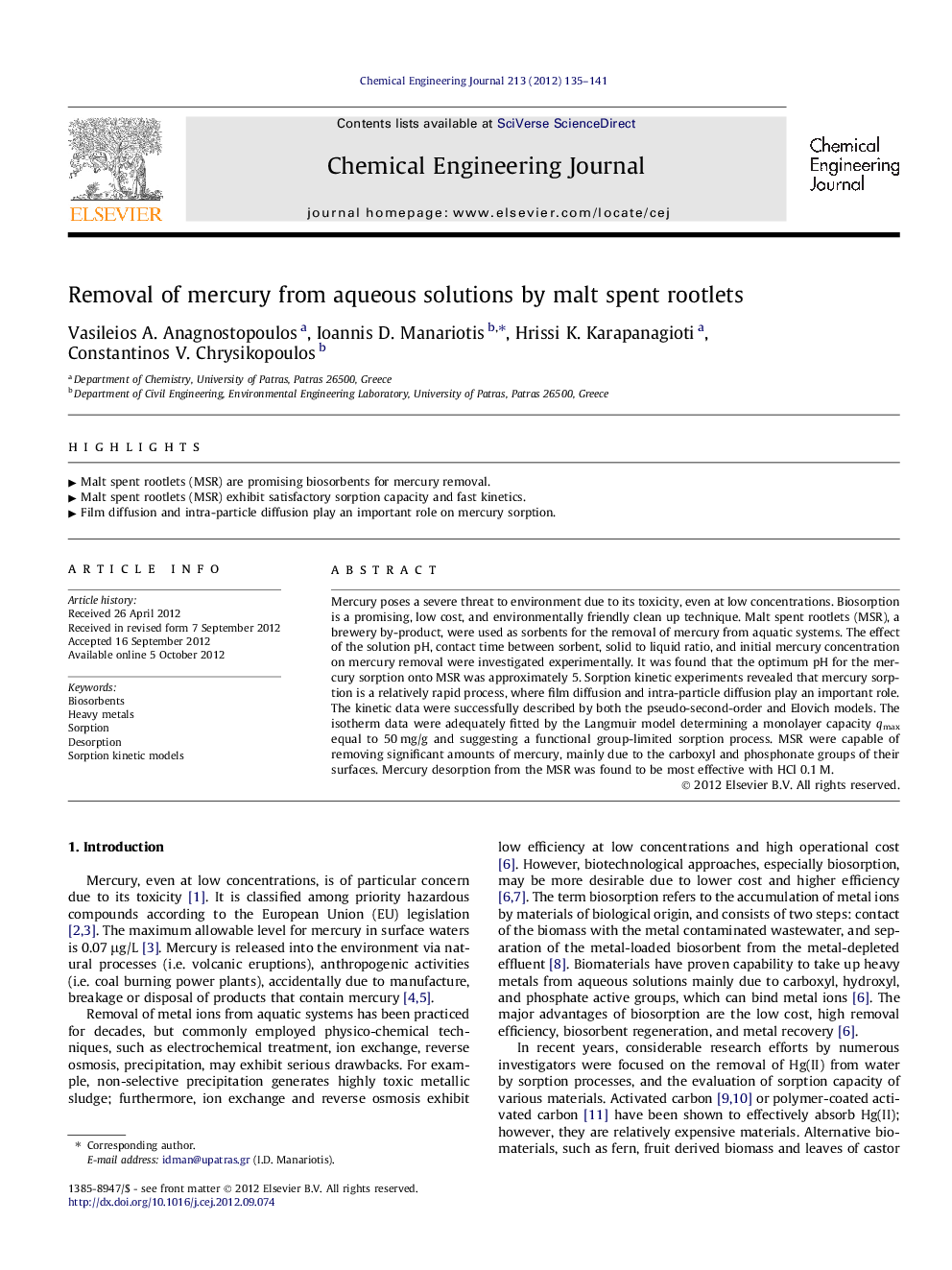| Article ID | Journal | Published Year | Pages | File Type |
|---|---|---|---|---|
| 149093 | Chemical Engineering Journal | 2012 | 7 Pages |
Mercury poses a severe threat to environment due to its toxicity, even at low concentrations. Biosorption is a promising, low cost, and environmentally friendly clean up technique. Malt spent rootlets (MSR), a brewery by-product, were used as sorbents for the removal of mercury from aquatic systems. The effect of the solution pH, contact time between sorbent, solid to liquid ratio, and initial mercury concentration on mercury removal were investigated experimentally. It was found that the optimum pH for the mercury sorption onto MSR was approximately 5. Sorption kinetic experiments revealed that mercury sorption is a relatively rapid process, where film diffusion and intra-particle diffusion play an important role. The kinetic data were successfully described by both the pseudo-second-order and Elovich models. The isotherm data were adequately fitted by the Langmuir model determining a monolayer capacity qmax equal to 50 mg/g and suggesting a functional group-limited sorption process. MSR were capable of removing significant amounts of mercury, mainly due to the carboxyl and phosphonate groups of their surfaces. Mercury desorption from the MSR was found to be most effective with HCl 0.1 M.
► Malt spent rootlets (MSR) are promising biosorbents for mercury removal. ► Malt spent rootlets (MSR) exhibit satisfactory sorption capacity and fast kinetics. ► Film diffusion and intra-particle diffusion play an important role on mercury sorption.
